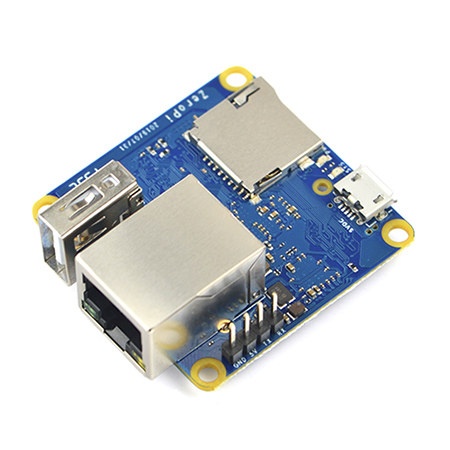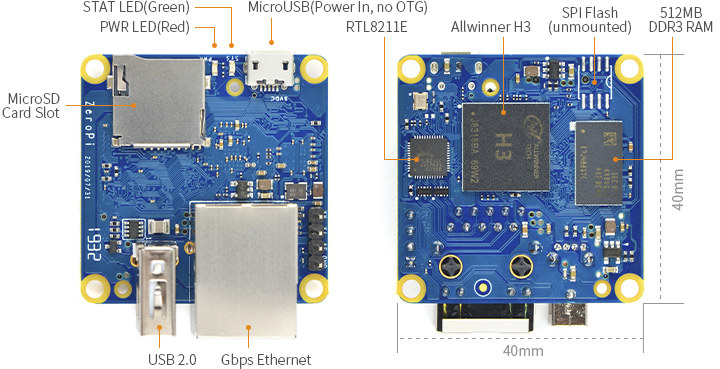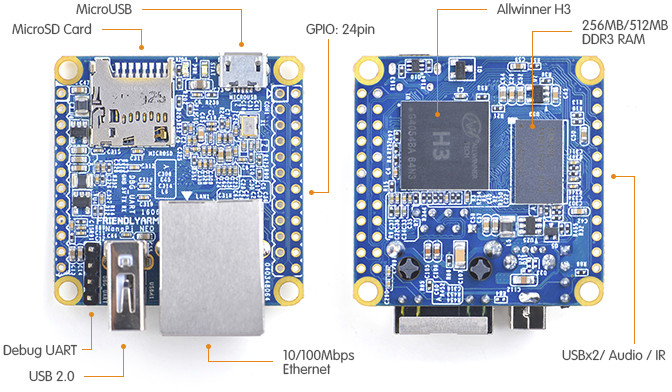Several years ago, FriendlyELEC launched NanoPi NEO board with Allwinner H3 quad-core Cortex-A7 processor followed by NanoPi NEO2 upgrading to the Allwinner H5 64-bit Arm Cortex-A53 processor. Both boards target low-cost headless applications with I/O headers, USB and Ethernet, but while the NEO2 comes with Gigabit Ethernet, NEO SBC only features 10/100M Ethernet.
The company has now been working on a new family of boards called ZeroPi that’s very similar to NanoPi NEO boards, but they do not come with any I/O headers, and the first ZeroPi board features Allwinner H3 processor, and Gigabit Ethernet.

stricken-through showing differences against NanoPi NEO:
- SoC – Allwinner H3 quad-core Cortex A7 @ 1.2 GHz with an Arm Mali-400MP2 GPU
- System Memory – 256 or 512 MB DDR3
- Storage – MicroSD card slot, unmounted SPI flash
- Connectivity – Gigabit Ethernet via Realtek RTL8211E PHY
- USB – 1x USB 2.0 host ports, 1x micro USB
OTGport,2x USB via headers - Expansion headers – None
- Debugging – 4-pin header for serial console
- Misc – Power and status LEDs
- Power Supply – 5V/2A via micro USB port
or VDD pin on headers.
- Dimensions – 40 x 40 mm


I’ve also added NanoPi NEO board for comparison, and we can see ZeroPi design looks much simpler, so it may end up costing the same or maybe less despite the extra Gigabit transceiver chip.
The company may have figured out most people don’t actually use the I/O header on NanoPi NEO, so they designed a board targeting USB (storage) and wire networking, with the option to boot from the network (without microSD card) via the SPI flash, which hopefully they’ll offer as option without people having to solder their own.
ZeroPi is likely software-compatible with NanoPi NEO so beside Friendlycore (Ubuntu Core) and OpenWrt images provided by the company, Armbian should also be supported.
The board has not launched yet, and I got all information from the Wiki. [Update: The 512MB RAM version of ZeroPi board is sold for $12.99 on FriendlyELEC store where you’ll also find accessories such as a $4.99 metal enclosure].
[Update 2: The board is $10.99 if you purchase with crypto-currency on OpenBazaar]

Jean-Luc started CNX Software in 2010 as a part-time endeavor, before quitting his job as a software engineering manager, and starting to write daily news, and reviews full time later in 2011.
Support CNX Software! Donate via cryptocurrencies, become a Patron on Patreon, or purchase goods on Amazon or Aliexpress




